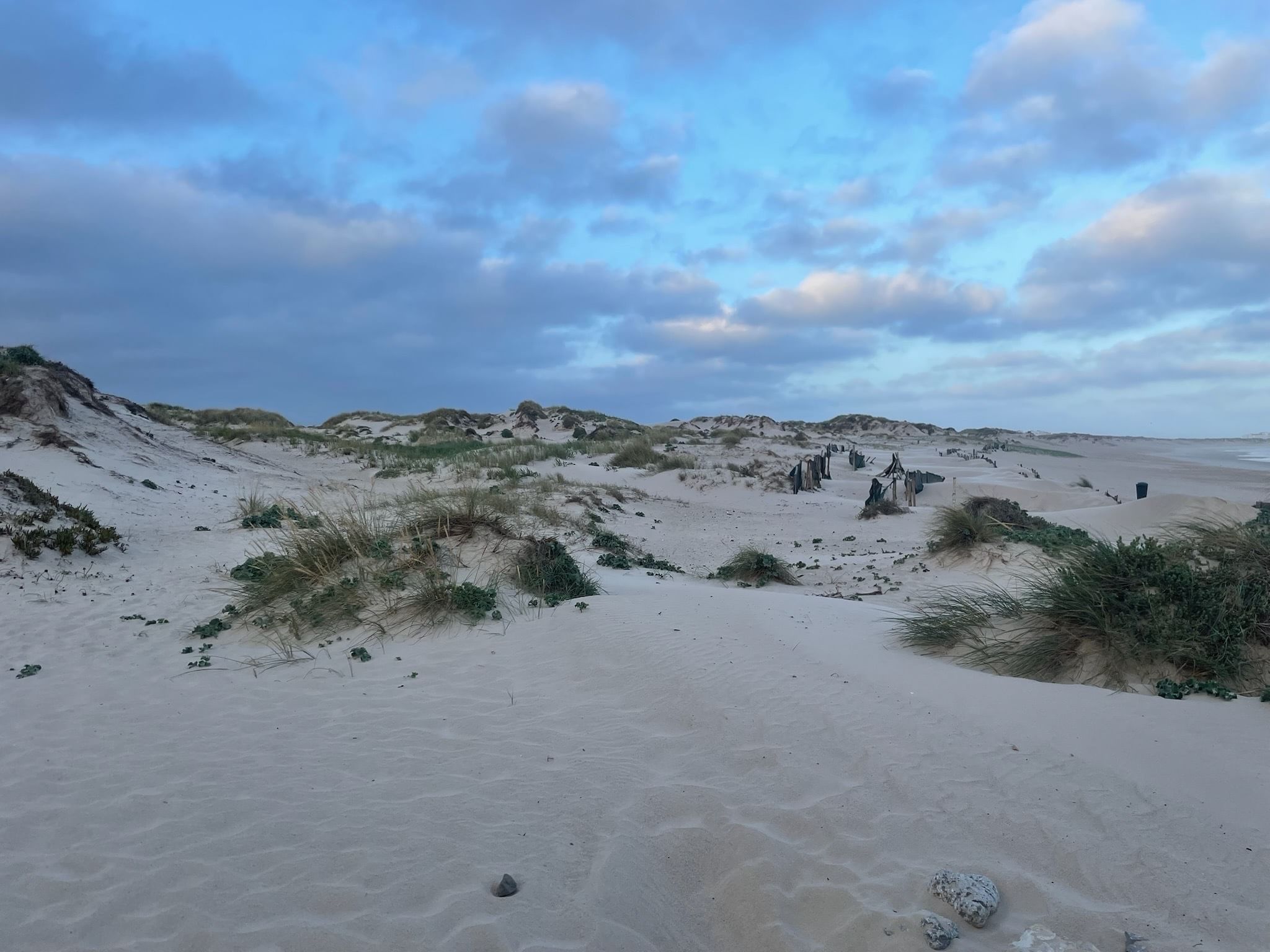Aug 26th, 2025
Dune, But Not the Movie

By: Megan Meadows
Travel is the best. It offers a fresh perspective on how other countries interact with their natural resources. As an environmental lawyer, I’ve learned it’s nearly impossible to turn that part of my brain off, even on vacation listening to the sound of waves or feeling the aggression of wind in my hair. Recently, while exploring Portugal’s coastlines, I was struck not only by the beauty of its beaches but by the epic sand dune systems that protect them — and by how seriously the country treats these natural defenses.
This wasn’t just about good laws. It was about enforcement, cultural expectations, and a shared commitment from the public to preserve what matters. And that’s what inspired this reflection.
Sand Dunes and the Rule of (Natural) Law
Sand dunes are more than picturesque landscapes. They are critical ecosystems that protect inland areas from erosion, storm surges, and rising seas. Acting like natural levees, dunes absorb the energy of waves during storms, reducing property damage and saving lives. They also support biodiversity and sustain beaches that might otherwise vanish.
Dunes reduce property damage, protect human lives, and lessen the need for expensive infrastructure like seawalls. Compared to artificial solutions, dunes are cost-effective and self-sustaining if managed properly. Their shape and vegetation trap wind-blown sand and gradually rebuild eroded shorelines.
In places where climate-driven erosion is accelerating, dunes are a first line of defense. Plants like marram grass have deep roots that stabilize sand and prevent the grass from blowing away. And while they look like they might be just plain static piles of sand, looks can be deceiving. Dunes regenerate naturally if protected from trampling and overdevelopment. Some coastal dunes — especially larger systems — act as natural water sponges. They absorb rainwater and help recharge coastal aquifers, which are increasingly important during droughts in Portugal’s southern regions. Dunes slow surface runoff, preventing flash flooding and allowing infiltration. Healthy dune vegetation improves soil permeability and reduces erosion from heavy rainfall. Dunes help manage extreme precipitation events and support freshwater resources in dry areas.
Portugal recognizes their importance and invests in their protection. The country faces significant climate threats — rising seas, intensifying storms, and severe coastal erosion — much like parts of the United States, such as Florida, Louisiana, and California. But Portugal’s approach demonstrates how combining sound legal frameworks with cultural buy-in can create resilient coastlines.
How Portugal Protects Its Dunes
Portugal’s dune protection is a mix of national law, European Union directives, and local enforcement. Key elements include:
- Strict Access Controls: Elevated walkways keep foot traffic off sensitive dune vegetation, and fines discourage trampling.
- Active Management: Revegetation projects, dune fencing, and restoration programs help dunes recover naturally.
- Public Education: Citizens are taught from an early age why dunes matter, ensuring long-term stewardship.
- Legal Backing: EU environmental directives are integrated into national law, with robust monitoring and penalties for non-compliance by the national conservation agency (ICNF).
This multi-layered approach is proactive rather than reactive — preventing damage instead of trying to fix it after the fact.
.jpeg)
The U.S. Perspective: Progress and Gaps
The United States has dune protections, but they vary widely. Federally, the Coastal Zone Management Act (CZMA) acknowledges their importance but leaves most enforcement to states and local governments. This results in a patchwork of protections:
- Some regions excel — California’s Coastal Act requires preservation of sensitive coastal habitats and restricts development impacts. Local Coastal Programs, approved by the California Coastal Commission, often include access controls and conservation zones. In Michigan, and parts of the East Coast, local regulations restrict access, and public education campaigns help.
- Others lag behind — In many states, dunes remain vulnerable to overdevelopment, recreational misuse, or underfunded enforcement efforts.
Who Should Care? Everyone.
Every country is tackling the same environmental problems — climate change, waste, water pollution — but with very different legal toolkits, including a concerted and consistent investment from citizens. Same problems, different strategies. And ultimately, how well these laws work depends not just on how they are written — but how they are lived.